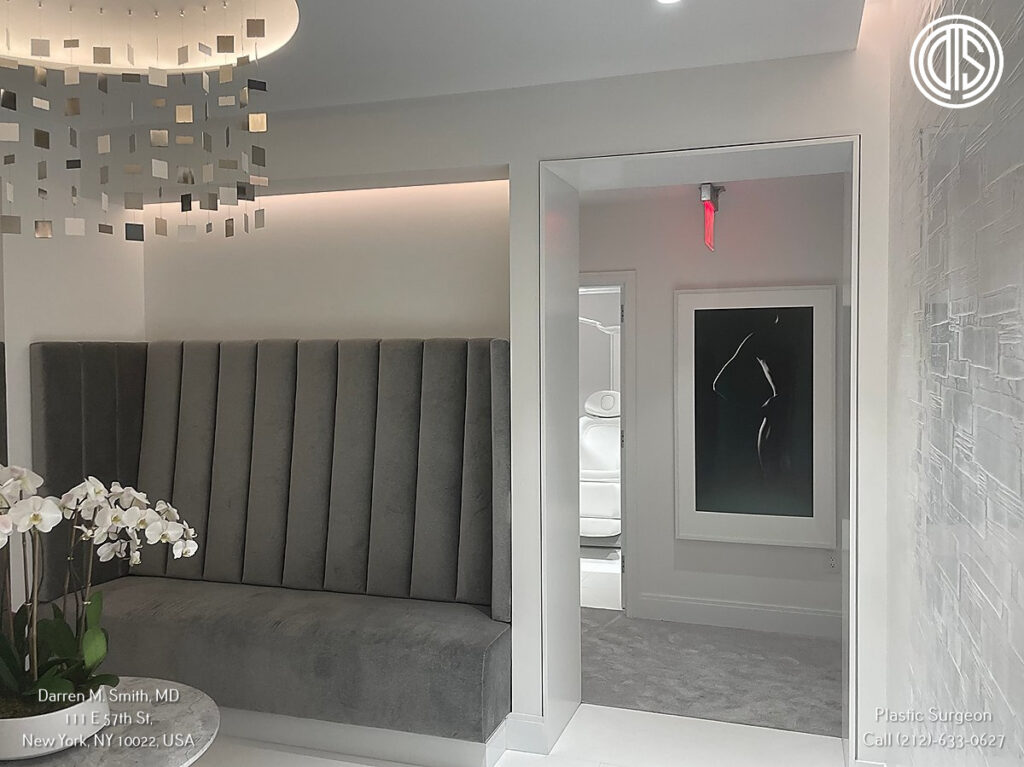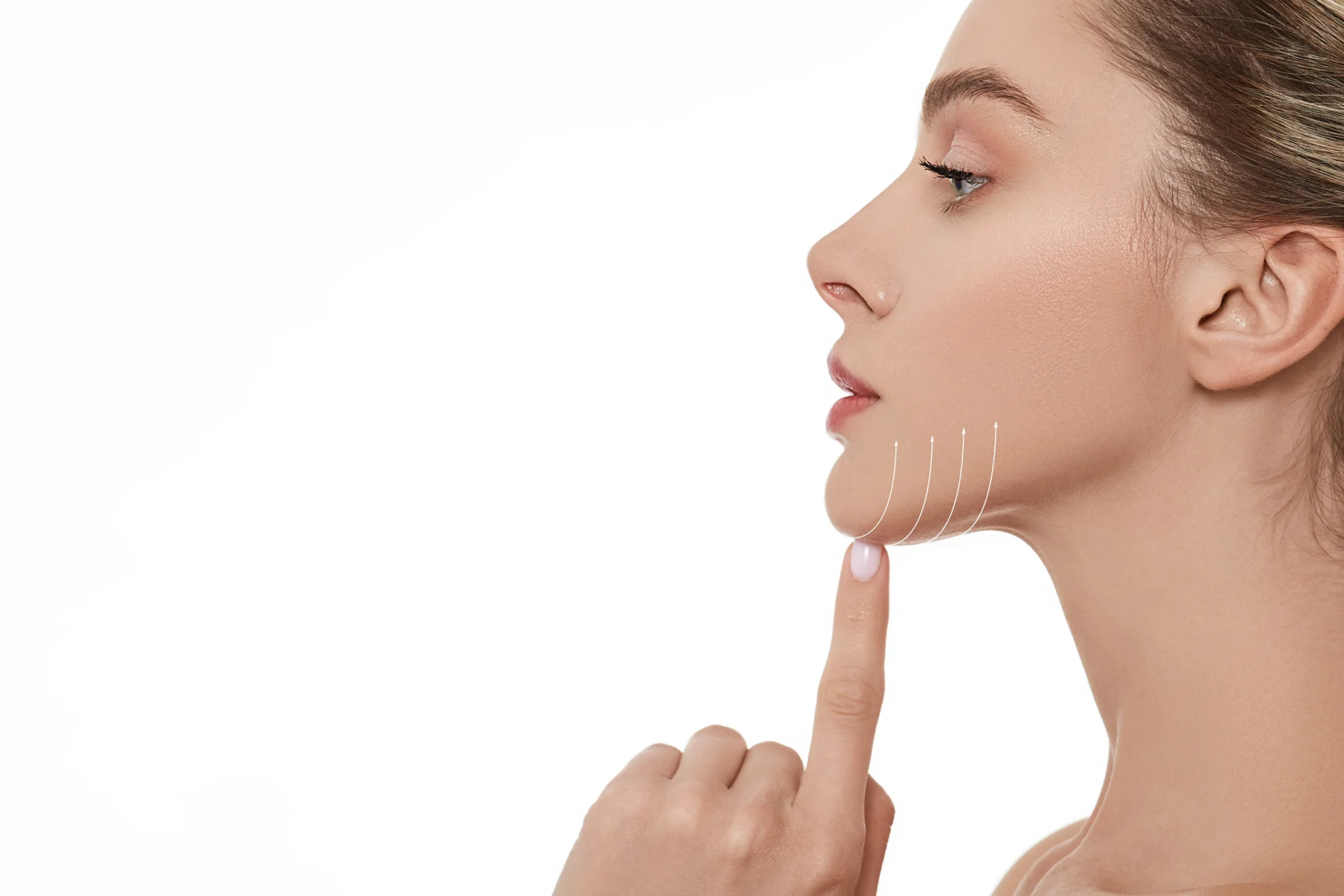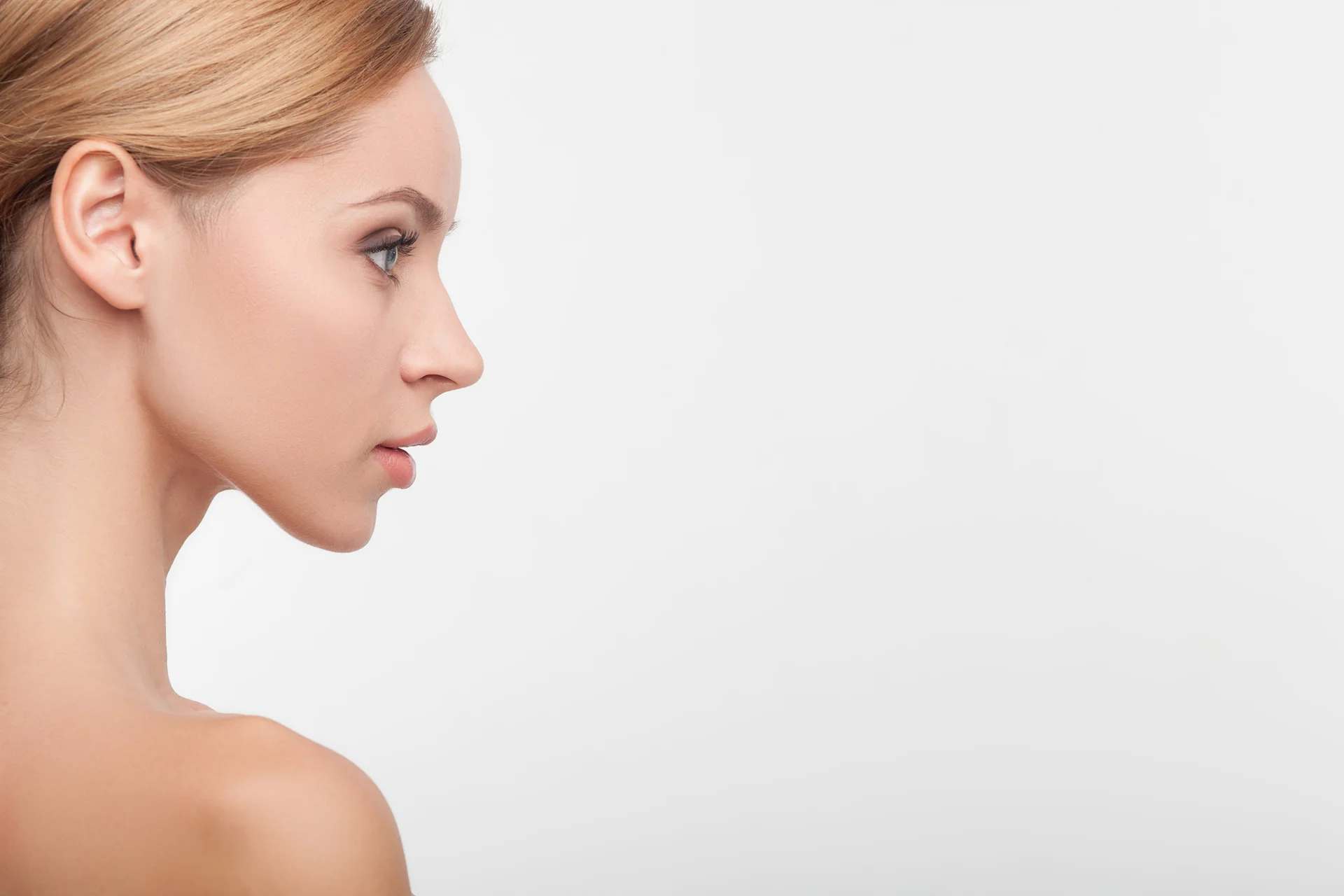Chin liposuction, also known as submental liposuction, is a procedure that removes fat deposits under the chin to contour the area.
While a successful procedure can sharpen jawlines and create a slimming effect, one potential complication is fibrosis after chin lipo.
This post-procedure skin scarring needs to be understood comprehensively, including the causes, symptoms, prevention strategies and treatment options.
What is Fibrosis After Chin Lipo?
Fibrosis after chin liposuction refers to excessive scarring that occurs under the skin following the surgical procedure. It involves a buildup of collagen scar tissue that forms as part of the healing process.
When tissues sustain damage and trauma from surgical procedures like liposuction, the body triggers an inflammatory response. This activates fibroblast cells which begin proliferating rapidly. They produce disorganized collagen deposits in an attempt to repair the injury.
Over time, crosslinks form between the collagen fibers, causing the tissue to gradually harden and thicken. This results in areas of dermal induration or woody fibrosis occurring under the skin of the chin after liposuction has been performed.
Some other terms for this condition include post-lipo capsular contracture, post-surgical dermal calcification or calcinosis, fibrous knotting, and collagen calcification. The skin can take on a rippled or pebbled appearance as hardened nodules of calcification develop under the surface.
Ultimately, the abnormal healing process leads to excessive dermal scarring and fibrosis which reduces elasticity and flexibility of the skin. This complication can cause unwanted post-procedure skin changes, discomfort, and loss of mobility. Comprehensively understanding the factors involved is key to prevention and treatment.
Causes and Risk Factors for Fibrosis
Why does troublesome scarring and fibrosis develop after chin liposuction in some patients? There are several potential causes and contributing risk factors:
Surgical Trauma – The liposuction procedure inevitably involves injury to the delicate tissues under the chin. This triggers inflammation and the healing response which activates fibroblasts to produce collagen. Some degree of scarring is expected, but excessive damage can worsen fibrosis.
Body’s Natural Healing Process – The inflammatory phase followed by rapid fibroblast proliferation and disorganized collagen deposition is part of the normal healing response. When this process is exaggerated, excessive scar tissue forms.
Poor Surgical Technique – Improper technique by the surgeon that is too aggressive or causes unnecessary trauma can increase inflammation and fibrosis. Lack of experience and skill is a risk factor.
Excessive Liposuction – Overzealous fat removal that exceeds recommended limits for the area places increased stress on tissues. This raises the risk for excessive scarring during the recovery process.
Smoking/Poor Nutrition – Lifestyle factors that restrict healthy circulation and nutrient supply to healing tissues make fibrosis more likely after any surgery. Smoking and nutritional deficiencies inhibit proper healing.
Genetics/Skin Type – Evidence shows that people with certain skin types and genetic traits may be predisposed to excessive scarring. Individual susceptibility plays a role.
Essentially, the severity of the initial surgical insult combined with the way the body intrinsically heals will determine the degree of fibrotic scarring. Understanding the risks allows proactive steps to be taken.
Signs and Symptoms of Post-Lipo Fibrosis
How can you identify potential fibrosis forming under the skin after chin liposuction? There are some common signs and symptoms to watch for:
| Sign/Symptom | Description |
| Hardened or thickened skin | The fibrotic tissue causes skin to feel unnaturally firm, thickened or “woody.” May have a pebbled texture. |
| Loss of elasticity | Scarring decreases skin’s flexibility causing tightness and restricted mobility. Skin no longer has a supple, elastic feel. |
| Visible or palpable nodules | Hardened lumps or bumps of calcification are noticeable visually or when gently pressed. Represent areas of excessive collagen deposition. |
| Reduced mobility | Thickened, stiff skin pulls tautly when facial muscles contract leading to decreased ease and range of motion. |
| Pain or discomfort | Tenderness, soreness, tightness, itching or aching may occur. Nerve involvement possible. |
| Inflammation | Area may become swollen, reddened and warm due to an inflammatory response. |
Monitoring for early symptoms is crucial since fibrosis progresses over time. Quick action provides the best chance to minimize permanent scarring.
Prevention and Self-Care After Chin Lipo

Preventing issues from the start is ideal when considering chin liposuction. What proactive steps can you take to avoid fibrosis?
Massage Techniques – Gentle massage should begin about 2 weeks post-op after initial healing. Using light pressure and strokes, it can help break up scar tissue and prevent adhesions.
Silicone Sheeting – Applying silicone sheets or gel strips can hydrate and soften scars by reducing collagen production. This minimizes hardening.
Proper Nutrition – A diet high in vitamins A, C, and E promotes healing. Supplements can also support optimal wound repair and regeneration.
Avoid Reinjury – Preventing additional trauma protects the area while it recovers. Follow all post-op directions to rest, slowly ease back into activities, and avoid sun exposure or irritants.
No Smoking – Refrain from smoking immediately before and after surgery to allow proper circulation and healing. The toxins severely hamper the body’s repair mechanisms.
Attentive self-care and prompt follow-up throughout the recovery period are paramount for best results long-term. Always follow your surgeon’s guidelines closely.
Scar Reduction Therapies
What treatments can help soften fibrosis and restrictive scarring that has formed under the chin after liposuction? Here are some options:
- Massage Techniques – Often recommended first, continual gentle massage can help break down collagen deposits and loosen stiffness over time. Combined with moisturizers, the area stays flexible.
- Laser Resurfacing – Low dose laser or pulsed light therapy can reduce scar tissue formation by stimulating new collagen production in a controlled way. Multiple treatments may be needed.
- Steroid Injections – Targeted corticosteroid shots directly into hardened fibrotic areas can help soften the scar tissue and allow for increased pliability. Results are temporary.
- Topical Silicone – Silicone gels or sheets provide hydration while limiting excessive collagen production in scars. This reduces hardening and induration.
- Surgical Revision – For significant or functionally impairing fibrosis, surgical removal of the densest scar tissue may be warranted. This is reserved for severe cases only.
Your doctor will determine the best treatment plan based on the extent of the scarring present and your symptoms. Prompt action is advisable for optimal outcomes.
When to See a Doctor
In which situations is it advisable to follow up with your surgeon or doctor for evaluation or possible treatment of post-liposuction fibrosis?
- The skin remains hardened, thickened and inflexible more than 6 weeks after the procedure.
- Significant loss of mobility or range of motion when smiling, talking, or making facial expressions.
- Persistent pain, tenderness, swelling or inflammation in the chin area during recovery.
- Visible or palpable bumps and nodules indicating calcifications.
- Functional impairment in smiling, eating, speaking due to tightness and stiffness.
- Aesthetic concerns over changes in skin texture or contour after initial healing period.
Arrange to be seen promptly if you notice any of these worrisome signs. Early intervention can often minimize permanent long term scarring. Your doctor will examine the tissue density and degree of skin involvement to recommend suitable therapies.
Understanding the Scarring Process
In order to minimize the risk of fibrosis, it helps to understand the physiological processes underlying the formation of scar tissue. Here is an overview:
- Surgical Injury Causes Inflammation – The liposuction procedure disrupts blood vessels and delicate facial tissues. This triggers an inflammatory response, sending immune cells rushing to the area.
- Fibroblast Cells Proliferate – Inflammation activates fibroblast cells which then begin dividing and increasing in number rapidly.
- Collagen Production Increases – The activated fibroblasts start ramping up production of collagen fibers to repair the injured tissue site.
- Scar Tissue Forms – The fibroblasts deposit excessive, disorganized collagen haphazardly throughout the damaged area as they attempt to heal the wounds.
- Crosslinks Cause Hardening – Over the next several weeks, collagen crosslinks form which make the scar tissue progressively stiffen and harden.
- Contractures Reduce Mobility – As the fibrotic tissue shrinks, it can put tension on surrounding mobile tissues which restricts flexibility.
- Calcifications May Develop – In some cases, hardened nodules of calcium deposits become noticeable in the scar tissue.
The severity of the scarring and loss of pliability will be determined by just how zealously this healing process ensues as the post-surgical inflammation triggers the cascade of events. Understanding the process points the way to prevention.
Minimizing the Risk of Fibrosis
While a degree of scarring is unavoidable after any invasive procedure like chin liposuction, there are ways to proactively minimize excessive fibrosis:
Select an Experienced Surgeon – Choose a well-qualified surgeon with specialized skill in the procedure to reduce injury and post-op issues.
Discuss Technique – Talk to your surgeon about precise techniques they will use to limit tissue trauma and damage in sensitive facial areas.
Follow Post-Op Instructions – Diligently follow all directions for rest, healing time, massage, supplements, and follow-ups. Support optimal healing.
Allow Adequate Recovery – Make sure to take enough downtime and not rush back into activities before tissues have fully mended.
Get Early Treatment – If any symptoms start to appear, address them quickly with your surgeon before lasting scars set in.
Avoid Smoking and Sun – Prevent anything that could impede healing for at least 6 weeks post-procedure including cigarettes and UV exposure.
The precautions taken by both surgeon and patient during the recovery period are invaluable for preventing fibrosis before it develops and minimizing risk factors.
Conclusion

Fibrosis or excessive scarring under the chin is a potential complication after liposuction to reduce a double chin. The traumatic injury of surgery triggers inflammation and collagen production by fibroblasts which are intended to heal wounds. But overzealous healing can lead to troublesome fibrosis characterized by rigid, thickened skin and even calcified nodules.
Contributing factors include surgical trauma, improper techniques, smoking, genetics, and more. Early symptoms like hardening and lack of mobility need prompt attention to avoid permanent loss of elasticity. With vigilance, the risk of fibrosis can be reduced through careful surgical measures, diligent post-op care, and early scar intervention therapies if needed.
While some fibrosis can occur after any invasive procedure, careful precautions and prompt treatment help assure optimal long-term outcomes after chin liposuction. Anticipating the issue preemptively allows proactive management for the best possible results.






